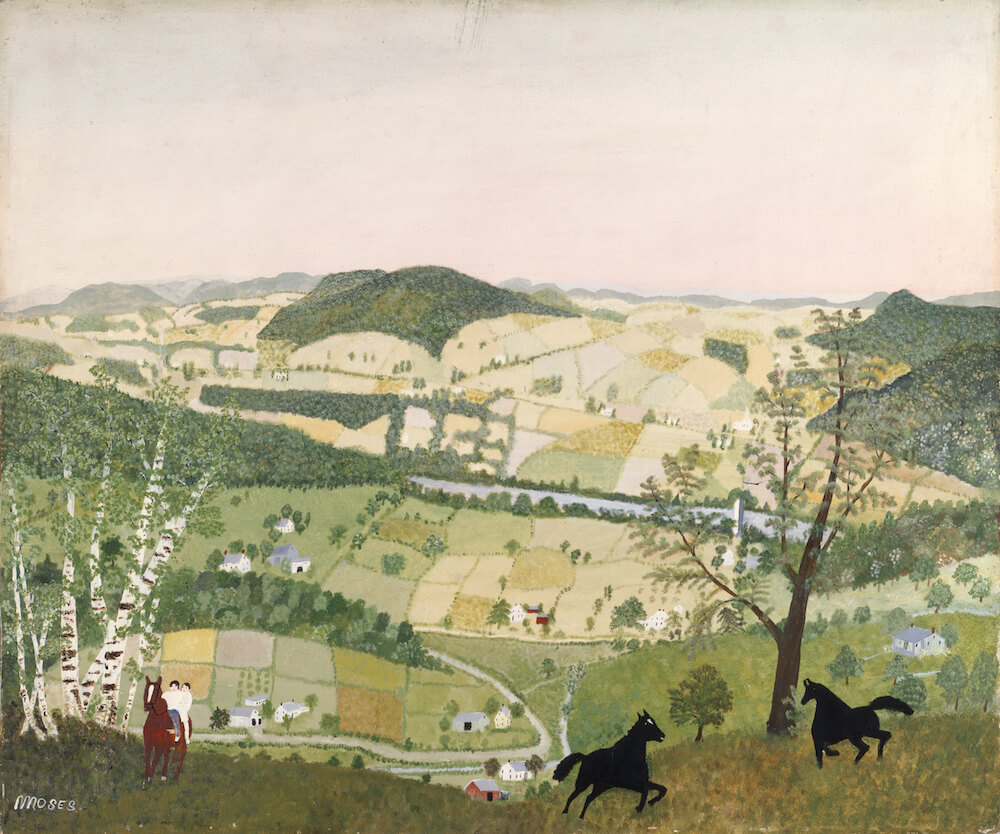The traveling exhibition “Gatecrashers: The Rise of the Self-Taught Artist in America,” is scheduled to be on view from Oct. 16, 2022, to Feb. 5, 2023, at The Westmoreland Museum of American Art in Greensburg, Pennsylvania. Chief Curator Barbara L. Jones said the exhibition celebrates more than a dozen early-20th-century painters who fundamentally reshaped who could be an artist in the United States.

The Westmoreland Museum of American Art was considering organizing an exhibition of John Kane and his contemporary self-taught artists when it learned of the exhibition “Gatecrashers” being organized by Katherine Jentleson, Merrie and Dan Boone Curator of Folk and Self-Taught Art at the High Museum of Art in Atlanta. It contained all the artists that The Westmoreland was considering (John Kane, Grandma Moses, Horace Pippin) and more.

“‘Gatecrashers’ was organized as a traveling exhibition, so I inquired to see if there were any dates available, and fortunately there were, so we signed as the third venue in the tour,” Jones said. “We are also a lender to the exhibition, loaning two John Kane paintings, and five additional paintings from our permanent collection. ‘Gatecrashers’ both aligns and overlaps with an exhibition on John Kane being organized by the Senator John Heinz History Center that will examine him as both a laborer and artist giving our audience a more comprehensive view of John Kane. ‘Gatecrashers’ will also overlap dates with the 58th Carnegie International, and recall John Kane’s ‘gatecrashing’ of that exhibition in 1927 (from which the High Museum derived their title).”
The goal of the exhibition is to introduce a broad audience to the contributions to American art history of these self-taught artists, Jones said.
And, Jones noted, as the curator has written: “The stories of these three artists not only intertwine with the major critical debates of their period but also prefigure the call for inclusion in representations of American art today.”


Moreover, as the exhibition’s Prospectus states: “Many artists fall into obscurity despite having made significant impacts in their lifetimes, but the self-taught artists who were celebrated during the moment this exhibition explores are exceptional cases worthy of reexamination because their breakthroughs marked a dramatic revision of who could be an artist in America. Their gatecrashing paved the way for subsequent generations of self-taught artists whose work has greatly diversified the narratives of American art that we teach in our universities and display in our museums — across lines of race, gender, class, disability, and other many important markers of identity that are all too often underrepresented in our cultural canons.”

Western Pennsylvania’s only museum dedicated to American art, The Westmoreland Museum of American Art is a place to share meaningful cultural experiences that open the door to new ideas, perspectives and possibilities. The Westmoreland’s extraordinary permanent collection with its strong focus on the art and artists of Southwestern Pennsylvania is complemented by an impressive temporary exhibition schedule featuring both nationally traveling exhibitions and those organized by the museum. Additionally, The Westmoreland presents a full slate of community-oriented programming as well as special events. More information is available at thewestmoreland.org and on the museum’s Facebook, Twitter and Instagram profiles.
General admission to the museum is free, and guided docent-led group tours may be arranged as well as brunch, lunch or dinner paid group tour packages. The museum’s operating hours are Wednesday–Sunday, 10 a.m.–5 p.m.
Main image: John Kane (American, 1860-1934), Hills and Rivers, Steamboat at Sleepy Hollow, 1929, Oil on canvas, The Westmoreland Museum of American Art, Gift of the Estate of Richard M. Scaife.











